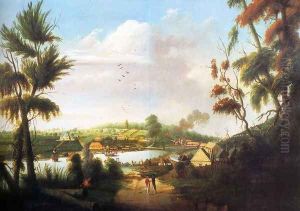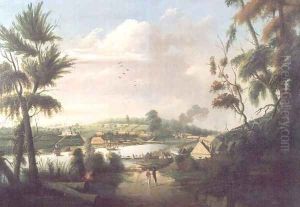Thomas Watling Paintings
Thomas Watling was a Scottish artist born in Dumfries in 1762, known primarily for his extensive work documenting the natural history and colonial life of early Australia. Before his life took a dramatic turn leading him to the shores of Australia, Watling was trained as an artist in Dumfries. However, his early career in Scotland came to an abrupt halt due to legal troubles. Watling was convicted of forgery—a serious crime that led to his transportation to Australia as a convict in the late 18th century, a common punishment for various crimes during that period.
Upon arrival in Australia, Watling's artistic skills quickly came to the attention of the colonial authorities. He was assigned to John White, the Surgeon General to the colony, who was in the process of compiling a comprehensive record of the flora, fauna, and indigenous peoples of the new territory. Watling's contributions to White's endeavor became some of the earliest and most significant visual records of Australia during the initial years of European settlement. His drawings and watercolors provide invaluable insights into the environment and indigenous cultures at a time of immense change and upheaval.
Watling's body of work is notable not only for its historical value but also for its artistic merit. His detailed illustrations of birds, plants, and landscapes are recognized for their precision and beauty, contributing significantly to European knowledge of Australian natural history at the time. Additionally, his depictions of the indigenous peoples and scenes of colonial life offer a unique perspective on the early interactions between European settlers and Aboriginal Australians.
Despite his contributions to art and science, Thomas Watling's later life remains somewhat of a mystery. Historical records do not definitively detail the circumstances of his death or the latter part of his life, and as such, the exact date of his death remains unknown. Nevertheless, his legacy endures through his artwork, which continues to be studied and appreciated for its historical significance and artistic quality. Watling's journey from a convicted forger to a celebrated artist underscores the transformative power of art and its enduring ability to capture and convey the complexities of human experience and the natural world.

